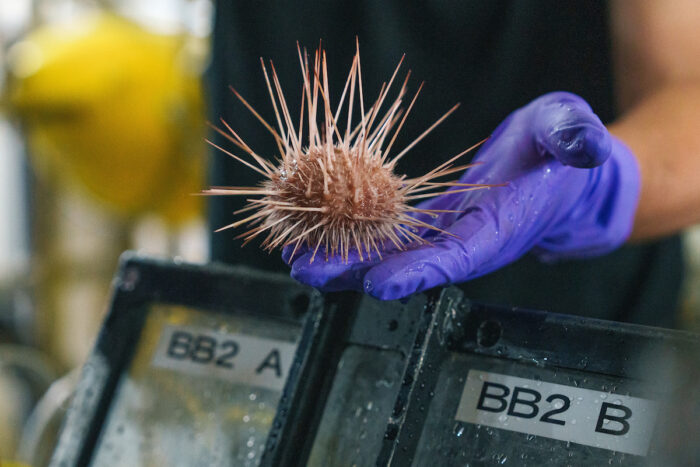Many have pointed out that we know less about the bottom of the ocean than we do about the surface of the moon. One recent discovery shows again how true this is.
Schmidt Ocean Institute’s team struck it biologically rich while working off the coast of Chile this month. They scoped out four new underwater mountains that featured a plethora of novel marine life.

A rarely seen whiplash squid 1,105m down. It inked the submersible shortly before this shot. Photo: ROV SuBastian/Schmidt Ocean Institute
When the team deployed a remote submersible from its research vessel in the relatively unexplored waters between Valparaiso and Rapa Nui, they had high hopes. It’s not uncommon to find unknown species in quiet ocean enclaves. But the prolific results blew away the team’s expectations, according to expedition leader Javier Sellanes of the Universidad Católica del Norte.
“The amount we found, especially for some groups like sponges, is mind-blowing,” said Sellanes.
Neither the team nor, likely, anyone else had ever seen many of the organisms the remote submersible SuBastian revealed. Working across a staggering 52,777 square kilometers of ocean floor, it cruised past cold-water corals and sponges, translucent squids, spiky lobsters and spindly sea spiders, and a bright-red fish that uses its fins like hands.
Their habitat proved as exotic as they were. The communities all perched on four never-before-seen “seamounts,” or submarine mountains. The tallest, now named “Solito” (roughly “little loner” in Spanish), stands a considerable 3,530 meters tall. Incredibly, each mountain hosts its own unique set of species.

Dr. Sellanes watches the live feed from SuBastian. Photo: Alex Ingle / Schmidt Ocean Institute
The area is called the Salas y Gomez Ridge, and it could harbor over 100 new members of the oceanic family tree when the dust of species identification clears.
“Dr. Sellanas and his team have an incredible number of samples from this amazingly beautiful and little-known biodiversity hotspot,” said Schmidt Ocean Institute Executive Director Dr. Jyotika Virmani, but “full species identification can take many years.”

Photo: Alex Ingle / Schmidt Ocean Institute
If you can’t wait that long, no problem. The team will livestream another expedition in the area this Saturday, Feb. 24. Their submersible will dive up to 600m below the surface — where they found, for instance, the squat lobster at the top of this article.

ROV SuBastian aboard Falkor (too). Photo: Alex Ingle / Schmidt Ocean Institute
Looking even further ahead for these colorful, remote habitats, the future seems bright. They lie within two government-protected marine habitats. This protection could have helped foster explosive biodiversity.
“These thriving and healthy ecosystems indicate that the Nazca-Desventuradas and Juan Fernández Marine Parks effectively protect delicate marine habitats,” Dr. Sellanes said.






